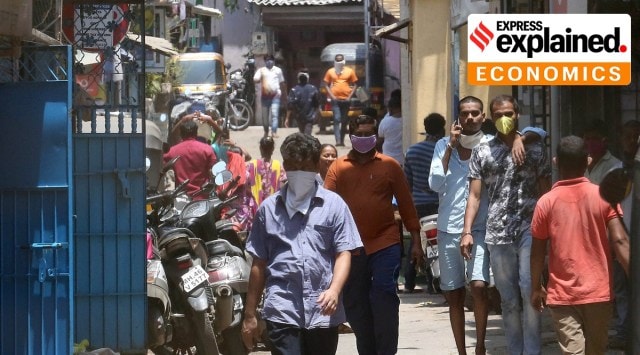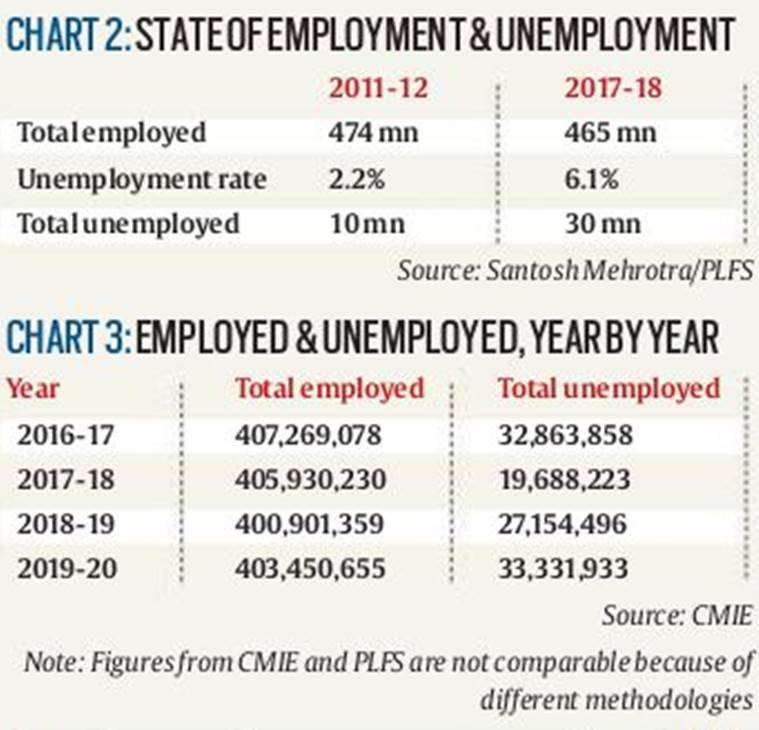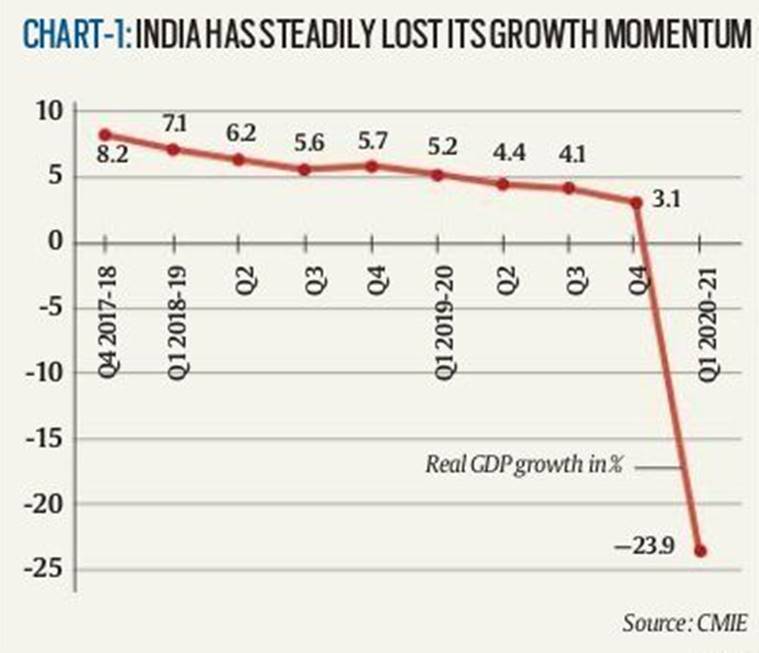- India
- International
Explained: Taking stock of jobs lost, sectors affected, and possible ways forward
Rising levels of unemployment have been brought into sharp focus by a sharp contraction of 23.9% in India’s GDP in the first quarter.
 In Navi Mumbai, during the nationwide lockdown due to Covid-19. (Express Photo: Amit Chakravarty)
In Navi Mumbai, during the nationwide lockdown due to Covid-19. (Express Photo: Amit Chakravarty)Mahesh Vyas, MD and CEO of the Centre for Monitoring Indian Economy (CMIE), will be the Expert Guest at Thursday’s edition of explained.Live, where he will discuss “How to save existing jobs and create new ones”. Rising levels of unemployment have been brought into sharp focus by a sharp contraction of 23.9% in India’s GDP in the first quarter. The lockdowns are likely to result in the Indian economy contracting by over 10% in the full financial year, and this is expected to result in more and more people losing jobs, apart from fewer new entrants finding work.
In other words, the number of unemployed is likely to grow not just because more and more people entering the labour force fail to find jobs, but also because several already employed are likely to lose their jobs.

Lack of data
Any analysis of the jobs situation in India is marred by the lack of prompt data on employment and unemployment. India’s official data on unemployment — provided through the Periodic Labour Force Survey (PLFS), which is conducted by the National Statistical Office under the Ministry of Statistics and Programme Implementation — comes out with a considerable lag. The PLFS is an annual survey that also provides quarterly updates but the latest PLFS report, which was released in June, pertains to July 2018 to June 2019 period.
In the absence of official estimates, the surveys done by CMIE, which Vyas heads, are often seen as the benchmark. However, it should be underscored that CMIE and PLFS data are not comparable because of methodological — and in particular, definitional — differences.
📣 Express Explained is now on Telegram. Click here to join our channel (@ieexplained) and stay updated with the latest

The story so far
In November 2019, a research paper by Santosh Mehrotra and Jajati Parida, published by the Centre of Sustainable Employment at the Azim Premji University, analysed PLFS 2017-18 data and found that for the first time in Independent India the total number of employed people declined between 2011-12 and 2017-18 (Chart 2). They calculated that total employment fell from 474 million in 2011-12 to 465 million in 2017-18 — a drop of 9 million.
 Source: CMIE
Source: CMIE
PLFS 2017-18 also found that the unemployment rate had trebled in this period of 6 years, reaching a 45-year high. According to Mehrotra and Parida, this meant the total number of unemployed went up from 10 million in 2011-12 to 30 million in 2017-18.
The worst affected were the youth — those between ages 15 and 29. The total number of unemployed youth went up marginally from 8.9 million in 2004-05 to 9 million in 2011-12 but shot up to 25.1 million by 2017-18. Worse, the rate of unemployment rose as one improved on educational attainment.
Since the end of 2017-18, India’s growth has steadily faltered (Chart 1). As a result, Mehrotra told The Indian Express that he does not expect the total number of unemployed coming down.
“The Covid pandemic now has, of course, completely destroyed the picture,” he said. India could have as many as 50 million unemployed at present, he added.
What’s more, according to his calculations, India needs to add around 10 mn to 12 mn new jobs each year for the coming decade. A recent McKinsey study, too, pegged the total number of non-farm jobs that India needed to create in the coming decade between 90 mn to 140 mn.
 Source: CMIE
Source: CMIE
Beyond NSO data
Since 2016, CMIE has been conducting its own surveys to track employment and unemployment levels in India on a weekly basis. However, Vyas states that their definition for gauging employment is far stricter and as such the data is not comparable to PLFS.
But even the CMIE data for the total number of employed and unemployed (Chart 3) exhibits a disappointing trend with both metrics worsening since 2016. The pandemic in 2020 had the expected deleterious impact on the job market. According to Vyas, the worst affected were salaried jobs which saw a reduction of 21 million between the start of April and August end. In terms of the age group, CMIE data suggests that the jobs of those between 15-39 were most severely affected.
More Explained
EXPRESS OPINION
Apr 26: Latest News
- 01
- 02
- 03
- 04
- 05










































